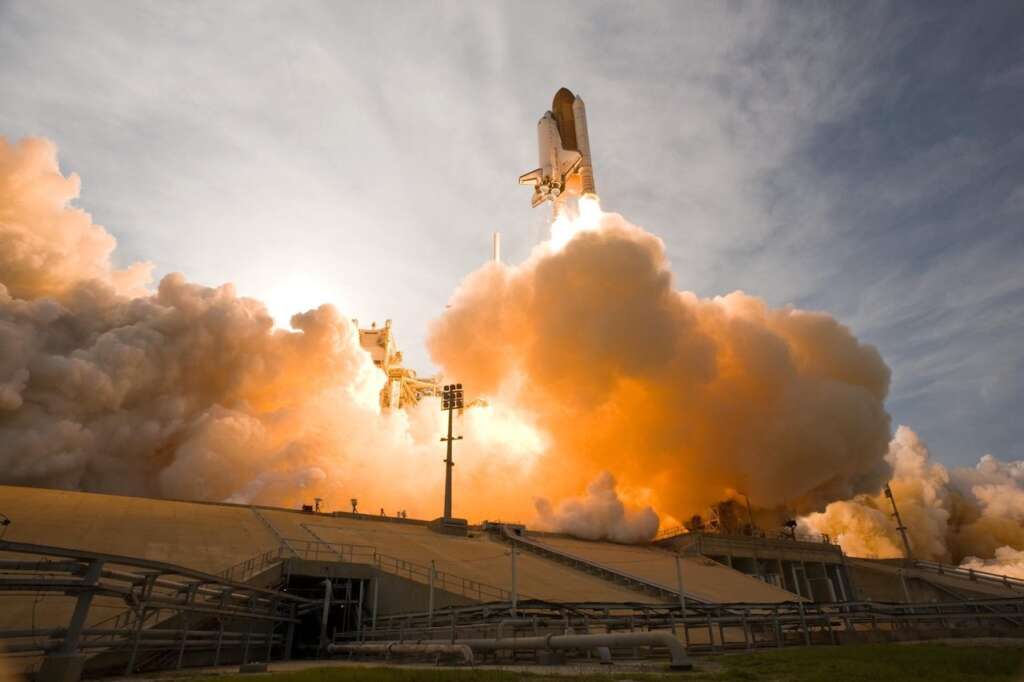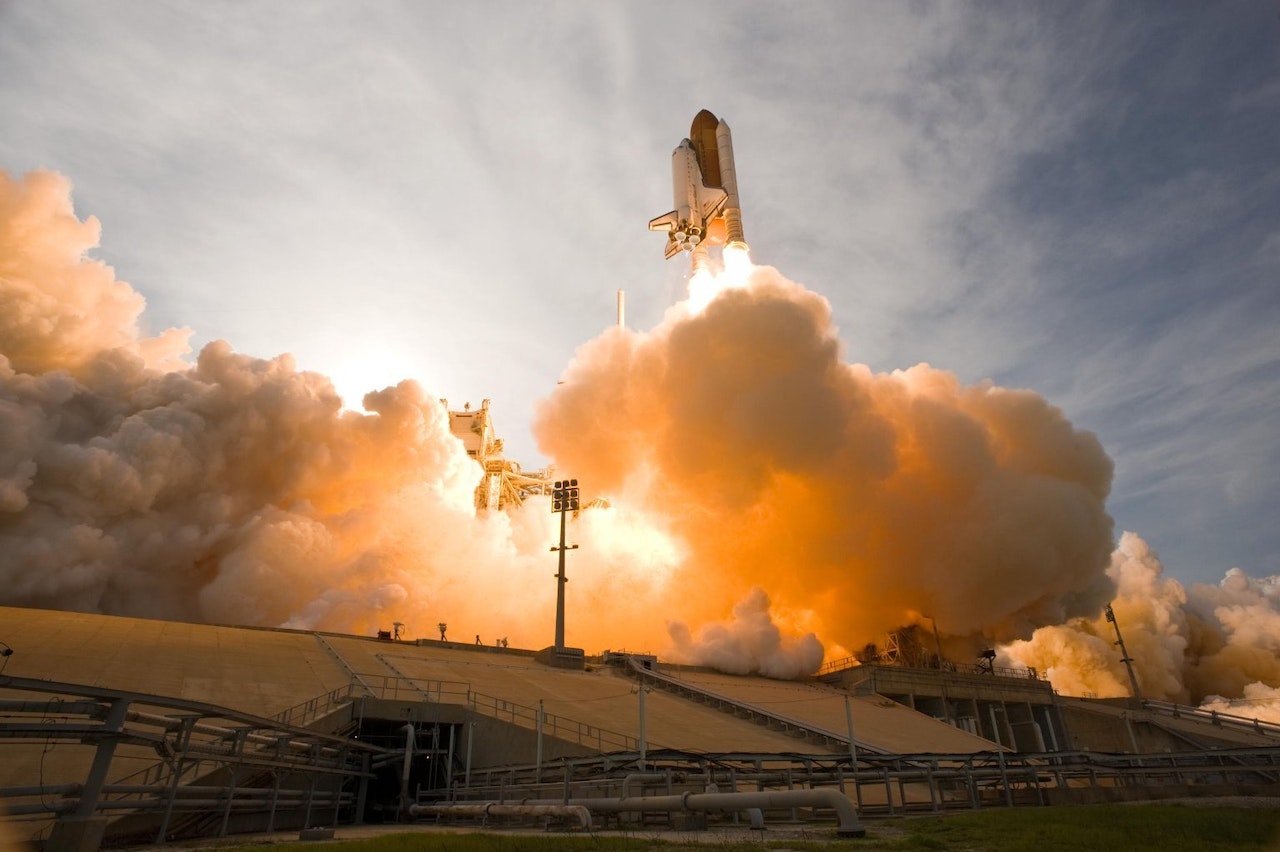Rocket propulsion is a field of science and engineering that has fascinated humanity for generations. It’s the key to our ability to explore outer space, send satellites into orbit, and even travel to other celestial bodies. The concept of rockets dates back to ancient China, but it’s only in the last century that we’ve truly harnessed the power of rocket propulsion for space exploration. In this blog post, we’ll delve into the fascinating world of rocket propulsion, exploring the science behind it and its crucial role in space exploration.

The Basics of Rocket Propulsion
Rocket propulsion is based on a straightforward principle: Newton’s third law of motion, which states that for every action, there is an equal and opposite reaction. In simpler terms, this means that if you push something in one direction, you’ll be pushed in the opposite direction with an equal force. Rockets take advantage of this principle to generate thrust and move through space.
The Components of a Rocket Engine
A typical rocket engine consists of three main components:
- Propellant: The fuel and oxidizer that the rocket engine burns to generate thrust. Common propellants include liquid hydrogen and liquid oxygen, kerosene, and solid propellants.
- Combustion Chamber: This is where the propellant is burned. The high-temperature and high-pressure gases produced in the combustion chamber are expelled at high speed through a nozzle.
- Nozzle: The nozzle is designed to accelerate the exhaust gases to supersonic speeds and direct them in a specific direction, generating thrust in the opposite direction.
How Rocket Propulsion Works
The process of rocket propulsion can be broken down into four fundamental steps:
- Combustion: In the combustion chamber, the propellant is ignited, creating a high-temperature and high-pressure gas. This process releases a tremendous amount of energy.
- Expansion: The hot gases produced during combustion are forced through the nozzle, where they expand and accelerate to supersonic speeds. This acceleration is a result of the nozzle’s carefully designed shape, which converts the high-pressure gas into high-speed exhaust.
- Ejection: The high-speed exhaust gases are expelled out of the rocket’s nozzle in a specific direction, following Newton’s third law of motion. This action creates an equal and opposite reaction, propelling the rocket forward.
- Thrust: The force generated by the ejection of exhaust gases is known as thrust. This thrust propels the rocket forward, allowing it to overcome Earth’s gravity and move through space.
Types of Rocket Propulsion
There are several types of rocket propulsion, each with its own advantages and applications:
- Liquid Rocket Engines: These engines use liquid propellants, typically a fuel and an oxidizer, stored in separate tanks. They are highly controllable and efficient, making them suitable for spacecraft and precision maneuvers.
- Solid Rocket Motors: Solid rockets use a single solid propellant, which simplifies their design and makes them reliable. They are commonly used in military missiles and space launch vehicles.
- Hybrid Rocket Engines: These engines combine the principles of both liquid and solid propulsion, often using a liquid oxidizer and a solid fuel. They offer some of the advantages of both types and are under development for various applications.
- Ion and Electric Propulsion: These advanced propulsion systems use electric or magnetic fields to accelerate ions or other charged particles to high speeds, providing very high efficiency but low thrust. They are often used for long-duration space missions.
Advancements in Rocket Propulsion
The field of rocket propulsion has witnessed significant advancements over the years, leading to more powerful and efficient engines. These developments have expanded our capabilities in space exploration and have made previously unimaginable missions a reality.
- Reusable Rockets: One of the most groundbreaking developments in recent years has been the emergence of reusable rockets. Companies like SpaceX have demonstrated the ability to recover and reuse the first stages of their rockets, significantly reducing the cost of access to space. This innovation has the potential to revolutionize space travel and open up new possibilities for both commercial and scientific missions.
- Improved Materials: Advances in materials science have led to the development of lightweight yet durable materials that can withstand the extreme conditions of space travel. These materials have allowed for the construction of more efficient and reliable rocket engines.
- Miniaturization: Miniaturization of rocket engines has led to the development of smaller and more agile spacecraft, which can perform a wide range of tasks, from Earth observation to planetary exploration. Miniaturized engines are also essential for the emerging field of small satellite technology.
- Electric Propulsion: Electric and ion propulsion systems have gained prominence in deep space missions. These engines offer much greater fuel efficiency than traditional chemical rockets, allowing spacecraft to travel longer distances and perform precise maneuvers with lower fuel consumption.
- Nuclear Propulsion: In the quest for even more efficient propulsion systems, nuclear propulsion is being explored. Nuclear thermal and nuclear electric propulsion systems have the potential to revolutionize long-duration missions to distant planets and beyond.
Read our post about Astronauts install new solar panels on ISS in six hours.
The Future of Rocket Propulsion
As we look to the future, several exciting possibilities are on the horizon for rocket propulsion:
- Mars Colonization: Rocket propulsion will be instrumental in enabling human colonization of Mars. Advanced propulsion systems will be required to transport people and cargo to the Red Planet efficiently and sustainably.
- Interstellar Travel: While still in the realm of science fiction, the dream of interstellar travel is becoming more feasible with the development of advanced propulsion technologies. Concepts like the “Breakthrough Starshot” project aim to send tiny probes to neighboring star systems using powerful lasers for propulsion.
- Space Tourism: Rocket propulsion is central to the emerging field of space tourism. As commercial space travel becomes more common, we can expect to see a variety of propulsion technologies used for suborbital and orbital flights.
- Space Debris Cleanup: Rockets equipped with specialized propulsion systems could play a crucial role in cleaning up the growing amount of space debris in Earth’s orbit, helping to ensure the long-term sustainability of space activities.
Major Players in Rocket Propulsion
The development and advancement of rocket propulsion wouldn’t be possible without the contributions of major aerospace companies and space agencies. These organizations have played a pivotal role in pushing the boundaries of propulsion technology and expanding our reach into space. Here are some of the prominent companies and agencies at the forefront of rocket propulsion:
- SpaceX: Founded by Elon Musk in 2002, SpaceX has become a game-changer in the aerospace industry. They are known for their Falcon 1, Falcon 9, and Falcon Heavy rockets, as well as the cutting-edge Raptor engines that power the Starship spacecraft. SpaceX’s innovations, including the reusability of rocket components, have significantly reduced the cost of access to space.
- Blue Origin: Led by Amazon founder Jeff Bezos, Blue Origin focuses on developing reusable rocket technologies. Their New Shepard suborbital rocket has paved the way for future space tourism and research missions. Blue Origin is also working on the powerful BE-4 engine, designed to be used in both their own rockets and the United Launch Alliance’s Vulcan rocket.
- NASA (National Aeronautics and Space Administration): The United States’ space agency, NASA, has been a driving force in rocket propulsion technology for decades. They have developed numerous iconic rockets, including the Saturn V that took astronauts to the Moon. NASA continues to work on advanced propulsion systems for upcoming missions to Mars and beyond.
- Boeing: Boeing is a major player in the aerospace industry, known for its contributions to rocket propulsion technology. They are a key partner in the United Launch Alliance, which utilizes the Atlas and Delta rockets for a variety of missions, including satellite launches and crewed missions to the International Space Station.
- Roscosmos: Russia’s state space agency, Roscosmos, has a rich history in rocket propulsion. They developed the renowned Soyuz rocket and the powerful RD-180 engine used in the Atlas V rocket. Roscosmos remains a significant player in the global space community.
- Arianespace: Arianespace, a European launch service provider, operates the Ariane, Vega, and Soyuz launch vehicles. Their propulsion technologies are critical for launching satellites and scientific missions into space.
- Northrop Grumman: Northrop Grumman is a key player in the development of solid rocket propulsion systems, with their Pegasus, Minotaur, and Antares rockets being used for various space missions, including cargo resupply to the International Space Station.
These major players, along with numerous other aerospace companies and space agencies around the world, continue to drive innovation in rocket propulsion. Their collaborative efforts, competition, and dedication to advancing technology ensure that the future of space exploration remains bright. As they work together and independently on developing new propulsion technologies, we can look forward to even more exciting and ambitious missions into the cosmos.
Rocket propulsion is a dynamic and ever-evolving field that continues to push the boundaries of what is possible in space exploration and travel. From the early days of simple fireworks to the sophisticated engines that power today’s spacecraft, the science and engineering of rocket propulsion have come a long way. As we embark on ambitious missions to explore distant planets, establish colonies on other celestial bodies, and potentially travel to the stars, the importance of rocket propulsion in shaping the future of humanity’s cosmic journey cannot be overstated. It is through the relentless pursuit of innovation in rocket propulsion that we continue to reach for the stars.
More relevant sources on Rocket Propulsion
Here are some valuable links to further resources on the internet where you can explore more about Rocket Propulsion:
- NASA’s Rocket Propulsion Division (RPD): NASA’s RPD is a hub for research and development in rocket propulsion. Their website offers a wealth of information on current projects, propulsion technologies, and the latest advancements in the field. (Website: NASA RPD)
- SpaceX: SpaceX’s website provides updates on their rocket launches, spacecraft, and propulsion technologies. They often livestream rocket launches, allowing enthusiasts to witness them in real-time. (Website: SpaceX)
- Blue Origin: Blue Origin’s website offers insights into their vision for space exploration and their latest developments in rocket propulsion, including the BE-4 engine. (Website: Blue Origin)
- RocketLab: RocketLab is known for its Electron rocket and its focus on small satellite launches. Their website features news, mission updates, and educational resources about rocket propulsion. (Website: RocketLab)
- American Institute of Aeronautics and Astronautics (AIAA): AIAA is a professional organization that promotes the advancement of aerospace science and technology. Their website offers access to research papers, publications, and events related to rocket propulsion. (Website: AIAA)
- Space.com: Space.com is a popular website that covers space news and exploration, including articles and features on rocket propulsion technologies, launches, and missions. (Website: Space.com)
- Rocketry Forums: Online forums like Rocketry Forum (Website: Rocketry Forum) and Reddit’s r/rocketry (Subreddit: r/rocketry) provide spaces for enthusiasts to discuss rocket propulsion, share experiences, and seek advice.
- YouTube Channels: Several YouTube channels, such as Everyday Astronaut (Channel: Everyday Astronaut) and Scott Manley (Channel: Scott Manley), offer informative and entertaining videos on rocket science, propulsion, and space exploration.
- Educational Institutions: Websites of universities and educational institutions often provide valuable resources on rocket propulsion research and educational programs. Institutions like the Massachusetts Institute of Technology (MIT) and Stanford University are known for their aerospace programs.
- Online Courses: Platforms like Coursera, edX, and Khan Academy offer online courses and lectures related to rocket propulsion, space science, and aerospace engineering.
Exploring these online resources will not only satisfy your curiosity about rocket propulsion but also keep you updated on the latest developments in space exploration and technology. Whether you’re a space enthusiast or a budding aerospace engineer, these sources will prove invaluable in expanding your knowledge of rocket propulsion.

